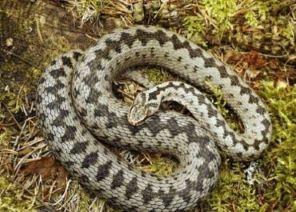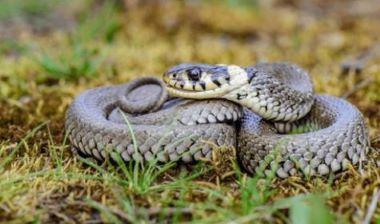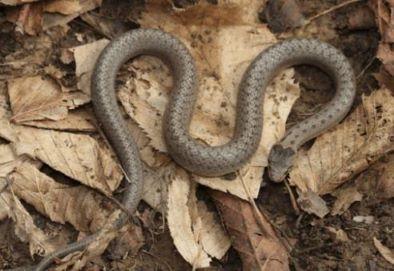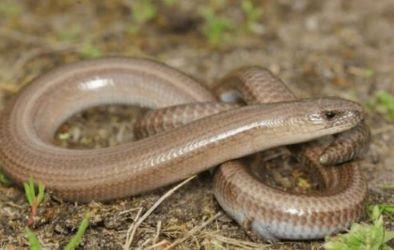Snake advice
Do not touch snakes. Although most British snakes are harmless (except the adder) you can never be sure where a snake has come from. It could be an exotic pet snake that has escaped, in which case it may be venomous. Never attempt to capture an exotic snake as it may be dangerous and need specialist handling.
Most native snakes will normally move away from humans and human activity. If a snake doesn't move away or is injured, then please contact the RSPCA 24-hour cruelty and advice line on telephone number 0300 1234 999 to report it.
In Britain there are three native species of snake: the adder, the grass snake and the smooth snake. Another animal that may be seen is the slow worm, which is actually a legless lizard - not a snake.
Adder
Up to 65cm long. Both males and females usually have a dark zig-zag marking along the back and a dark coloured 'V' on the head. The background colour of the males is light grey and the females brown.

They normally have an average of eight live young in August. They eat small mammals and are not often found in gardens. Adders are usually very timid and its normal reaction is to move away, however if the air is cool or it has recently emerged from hibernation it may move more slowly. If you think you’ve found an adder, do not handle it! It is Britain's only native venomous snake. Deaths are very rare with none reported in the UK for over thirty years, however the effects of a bite can be unpleasant. In the unlikely event of a bite, keep the bitten limb still, stay calm and seek medical attention as soon as possible.
Grass Snake
The longest British snake, it can be up to 150cm long but is usually around 75cm. The background colour is usually a shade of olive-green and this snake typically has a distinct yellow and black collar behind its head. There are also black markings or spots down the side of the body.

The preferred habitats of grass snakes are associated with water; they can swim well and are often seen in garden ponds. They may also be found in well established compost heaps. They feed mainly on amphibians and fish. If they are disturbed or threatened, grass snakes may hiss, pretend to strike, release a smelly fluid or, alternatively, pretend to be dead by rolling over to show the clear black and white checkerboard markings on their underside. The grass snake is harmless to people and pets and is not venomous.
Smooth Snake
Up to 70cm long, this snake is grey or grey/brown, with dark spots down the back. There is also often a dark butterfly-wing shape on the top of its head.

The smooth snake is very rare and strictly protected. It is only found in sandy heathland areas (restricted in distribution to Surrey, Dorset, Hampshire and some sand dunes in the north of England). The smooth snake is harmless to people and pets, as it is not venomous.
Slow Worm
This is not a snake, but a lizard without legs. It can grow up to 50cm long. Adults are a dull brown / grey / gold; all young slow worms have dark sides and a dark stripe along the back. Females may keep this stripe as adults.

The slow worm is found in gardens and allotments, where it eats slugs and snails. It is harmless.
Further Information
Remember all native snakes have legal protection under the Wildlife and Countryside Act 1981. It is an offence under this act to kill any of the above animals, especially the Smooth Snake which has additional legal protection due to its rarity.
Snakes are most active during the summer, and this is the time when you are most likely to encounter them. If you see a snake don't be alarmed; they are often just passing through and tend to shy away from humans.
Acceptable methods to help deter native snakes from your garden are:
- keeping grass short
- removing cover such as wood piles and rockeries
- using enclosed bins for compost
- repairing holes, cracks and crevices in buildings, patios and walls.
Caution: Handling of any animal either domestic, wild, dead or alive may be potentially hazardous. Obvious dangers include bites, scratches and general hygiene issues. Common sense should be applied in all instances and, if unsure, seek additional advice or assistance. Personal hygiene should be taken into consideration after handling any animal whether it’s domestic, wild, dead or alive.
The above information has been collated from various sources, including the RSPCA. For further information visit the RSPCA website or Wildlife Trust.

